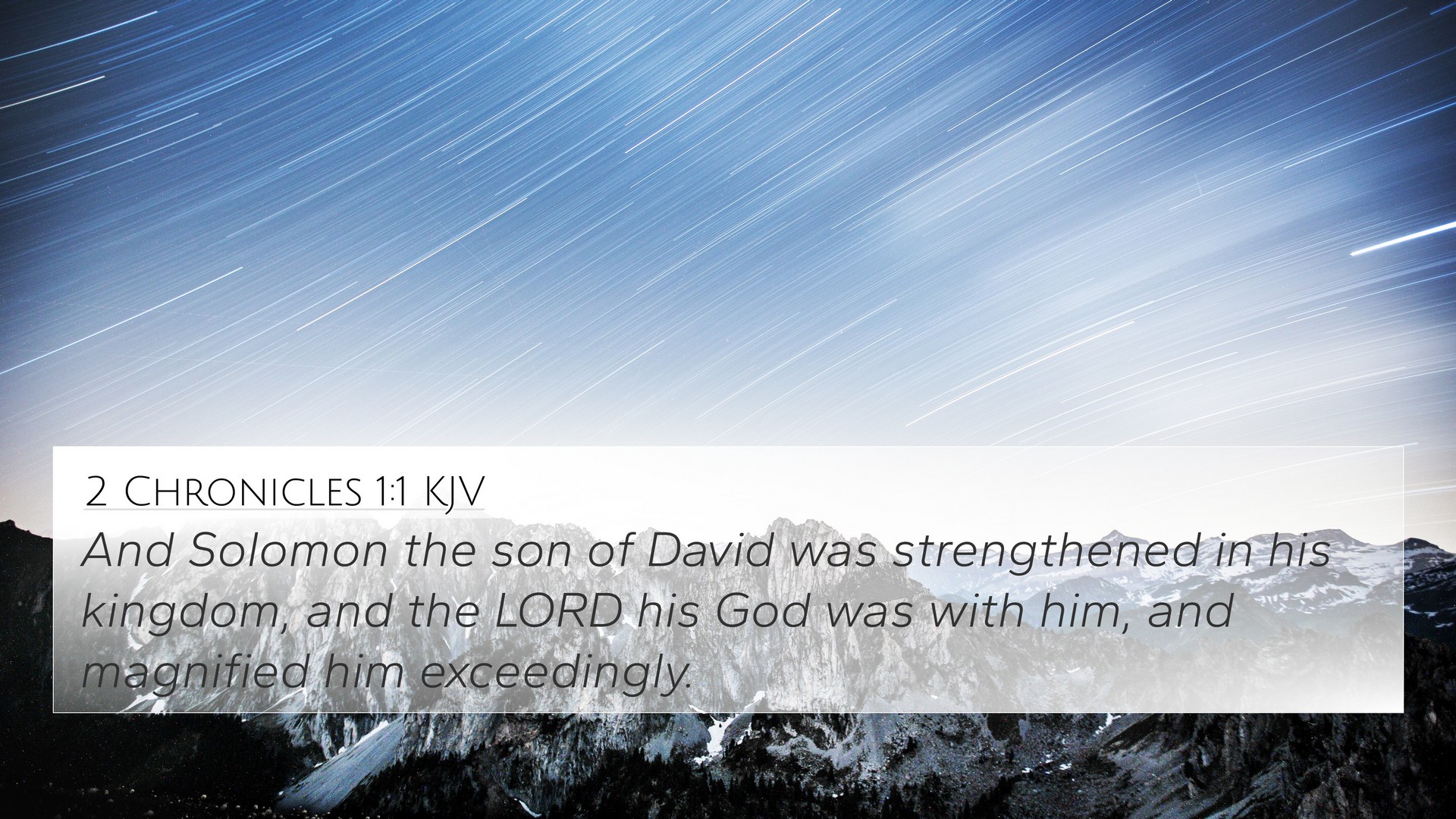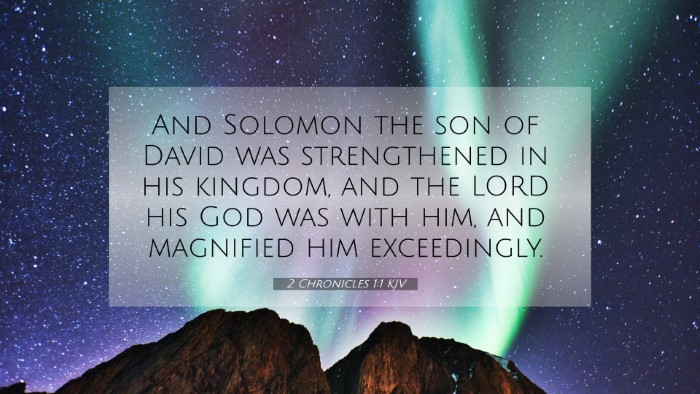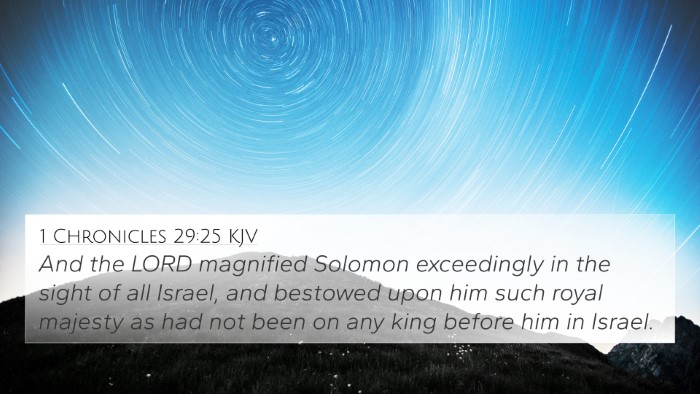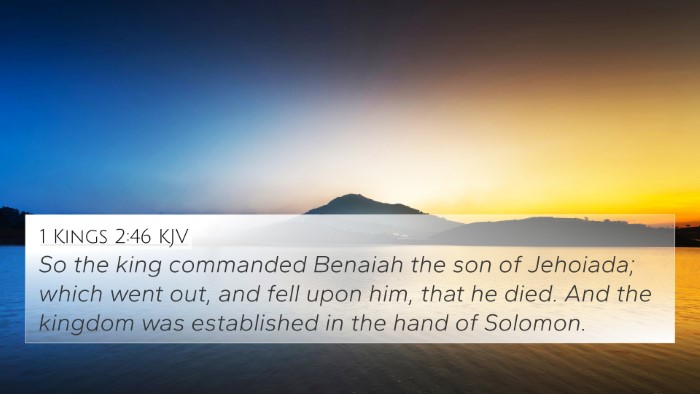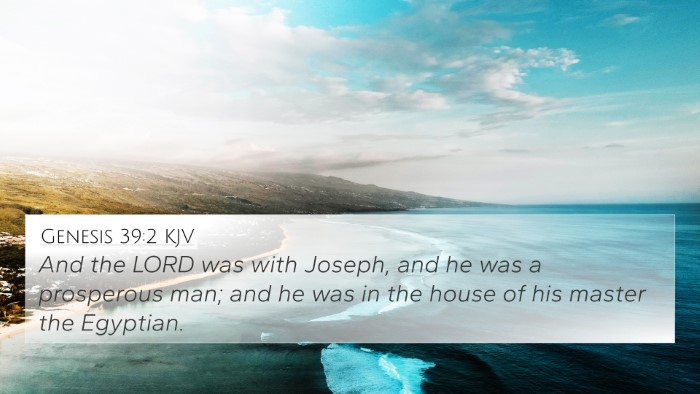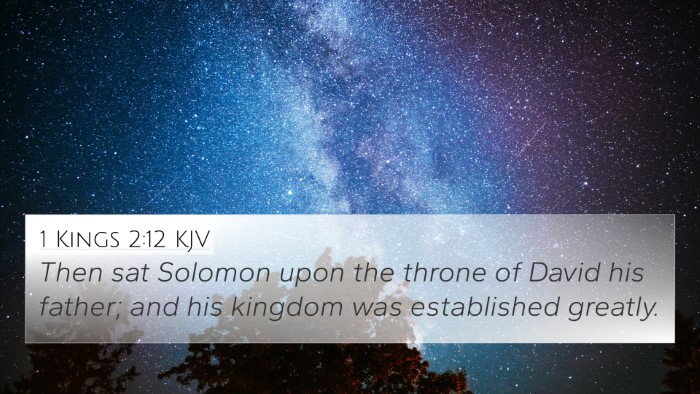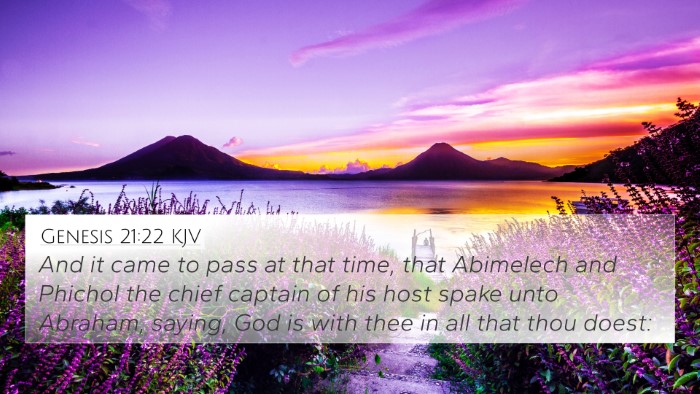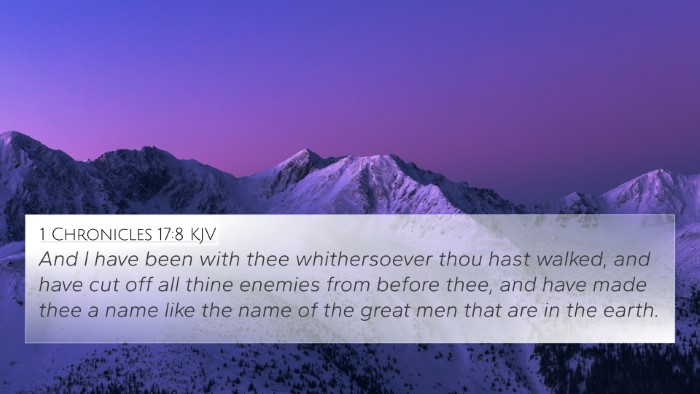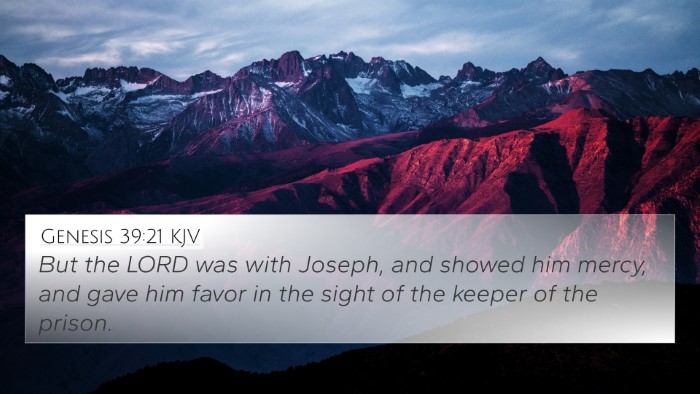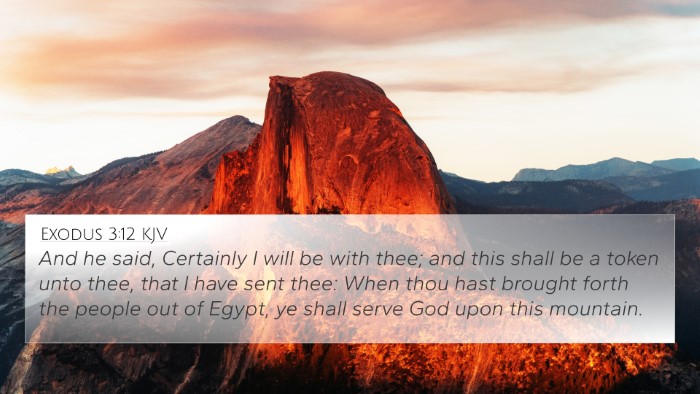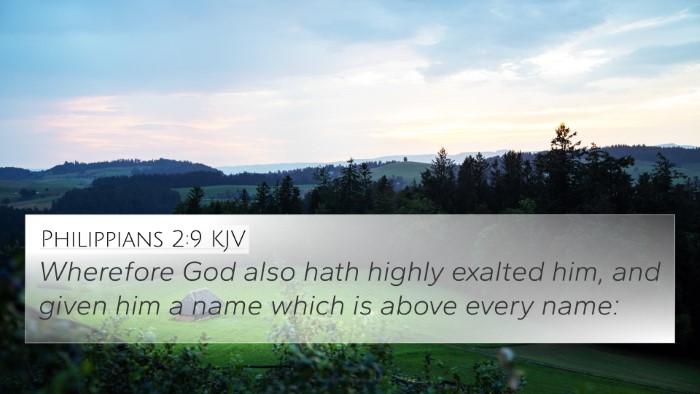Understanding 2 Chronicles 1:1
Bible Verse: 2 Chronicles 1:1
In this verse, we see the beginning of King Solomon's reign, highlighting significant themes of divine wisdom, leadership, and a relationship with God.
Summary of 2 Chronicles 1:1
This verse tells us that Solomon established himself firmly as king over Israel, with God’s support, and that he went on to gather people to himself at Gibeon to offer sacrifices. The importance of the Gibeon altar and sacrifices signifies the reverence for God in Solomon's early rule.
Key Themes and Insights
- Divine Approval: Solomon’s rise is marked by God's establishment; he does not seize power solely by human might, demonstrating the theological principle that leadership is ordained by God.
- Seeking Wisdom: The sacrifices made at Gibeon reflect Solomon's desire to seek God’s favor and wisdom, which becomes a pivotal moment later in his reign.
- Unity of Israel: Solomon’s actions aim to unify the nation under his leadership, showcasing the importance of communal worship as part of governance.
- Symbolic Location: Gibeon, as a significant place of worship, connects back to the history of the Israelites and indicates a continuity of religious practice.
Commentary Insights
The commentaries of Matthew Henry, Albert Barnes, and Adam Clarke provide deeper insight into this verse:
- Matthew Henry: He highlights Solomon's establishment as not merely a political move but one rooted in spiritual commitment, emphasizing the significance of seeking God’s direction from the outset of his reign.
- Albert Barnes: Barnes focuses on the importance of Gibeon as a historical site and the symbolism of sacrifices made there, suggesting these actions were intended to secure God’s blessing on Solomon’s rule.
- Adam Clarke: Clarke notes the implications of Solomon's actions, linking them to the larger narrative of Israel's journey and the need for a wise ruler who prioritizes divine relationship over pragmatic politics.
Cross References for 2 Chronicles 1:1
Here are some pertinent cross-references that shed light on the relationships and themes present in this verse:
- 1 Kings 3:1-15: Solomon's request for wisdom directly parallels the context in which he begins his reign.
- 2 Samuel 12:25: The affirmation of Solomon’s kingship and divine favor through Nathan the prophet.
- 1 Chronicles 22:5: Focus on Solomon as the chosen builder of the Temple, linking leadership to divine purpose.
- Exodus 20:24: The principle of offering sacrifices at designated places resonates with Solomon's actions at Gibeon.
- Psalms 72:1-2: A prayer for wise kingship that connects to Solomon's reign and his need for God's guidance.
- 1 Kings 9:3: God’s promise of a wise and prosperous reign as a continuation of the covenant with David.
- Isaiah 11:2-3: Prophecy about the Messianic era, relating to the wisdom that Solomon sought.
Connections Between Bible Verses
The relationships between these verses create a rich tapestry of themes illustrating divine guidance, the pursuit of wisdom, and the significance of worship in community governance.
These connections support various aspects of theological study, emphasizing how God’s involvement directly impacts the trajectory of biblical narrative, particularly in leadership.
Using Cross-References for Study
Studying the connections in scripture is vital for deeper understanding. Here are some tools and methods to effectively engage in cross-referencing:
- Bible Concordance: A valuable tool for finding specific themes and verses that relate to 2 Chronicles 1:1.
- Cross-reference Bible Study: Engage with scripture by linking verses that share similar themes or narratives.
- Bible Cross-reference Guide: Use guides that outline extensive connections throughout the text.
- Bible Reference Resources: Various resources provide comprehensive study material and connections to facilitate deeper exploration.
Conclusion
2 Chronicles 1:1 serves as a significant entry point into understanding Solomon's kingship, his relationship with God, and the foundational importance of wisdom in leadership. Through cross-referencing and thematic exploration, we can uncover the layers of meaning and guidance present in this scripture.
